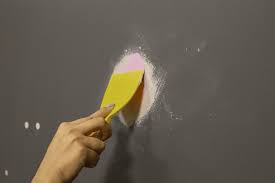How to Repair Holes and Imperfections in Walls

Unsightly holes and imperfections in the walls may disrupt any home or office. Walls get damaged and fade with time, so we see nail holes, cracks, dents, and some significant remaining from repair jobs or accidents. It is vital to deal with these issues quickly as they affect the quality of the aesthetics and structure in a space. The process of patch up and touch up services consists of filling up the damaged area carefully, smooth filling and refinishing. So that the surface is restored smoothly, and the flawed area blends with the rest of the wall.
Why Wall Repairs Is Important?
Fixing the wrong walls is not only a case of beauty but the strength of the building, too. Especially if ignored, the existing small gaps and pits will continue to expand on the surface of the wooden material. If this is done, it will lead to more decay, making the wall weaker when it comes to repair, thus increasing the cost and extent of repairs needed. If the wall is in a good state, it contributes to the cleanliness of the entire surrounding area and enhances the convenience of living or even working. Perfect walls are essential in improving the resale value of the whole property.
Touching Up And Patching Holes Process
The first thing to do when repairing wall damage is to know what caused the damage and how extensive its level is. At the same time, nail holes and cracks of lesser dimensions need to be treated differently to more significant gaps or dents. The damaged area is cleaned to remove dust, debris or loose plaster that might interfere with repair. Appropriate preparation involves excellent preparation for ensuring the filler or patching compound sticks well and gives a smooth, long-lasting finish.
The filler depends on the type of surface you are using. Spackling paste, joint compound, and other specialized fillers can be used to fill in the hole or crack. For larger openings, sagging or additional damage could occur, and reinforcement could be required. Once the filler has been applied, it is eased out to match the rest of the wall to prepare for the finishes.
After the patch has dried entirely, it is sanded down to refine its surface, leaving no excess material and ensuring a perfectly blended seam for the surrounding wall. The final step is priming and painting the area to the existing wall colour and texture. The key to repairing an area so that it is hardly noticeable and the wall looks its original self is to utilize proper finishing.
Common Types Of Wall Damage
Due to everyday activities, environmental factors, and accidental impact, various types of walls can be damaged. One of the most common problems is small nail holes from mounting decorations, shelves, or hooks. Minor imperfections, such as filler and paint, are quickly repaired with a quick touch. Small cracks can appear in drywall and plaster with time, settling, temperature change, and/or small structural shifts. However, if not attended to, the cracks become more pronounced and complex to mend. Early addressing of them prevents further growth and ensures the wall’s stability.
Daily activities, either by moving furniture or accidentally bumping into it with sharp objects, can cause accidental dents, which destroy the smoothness of the walls. Although these are usually just on the surface, they must be carefully patched to create an even surface again. Best carpentry services are required for bigger holes, usually from electrical or plumbing work. They must be well patched and reinforced and subject to proper adhesion. Small holes or cracks in the ceiling also bring an overall look to the space. It keeps ceilings uniform and prevents more damage. Besides the walls, wooden surfaces such as doors, trims or panels can also fall victim to chips and scratches. To fix these, you would sand them, fill them, sand/fill, until the refinish coat.



